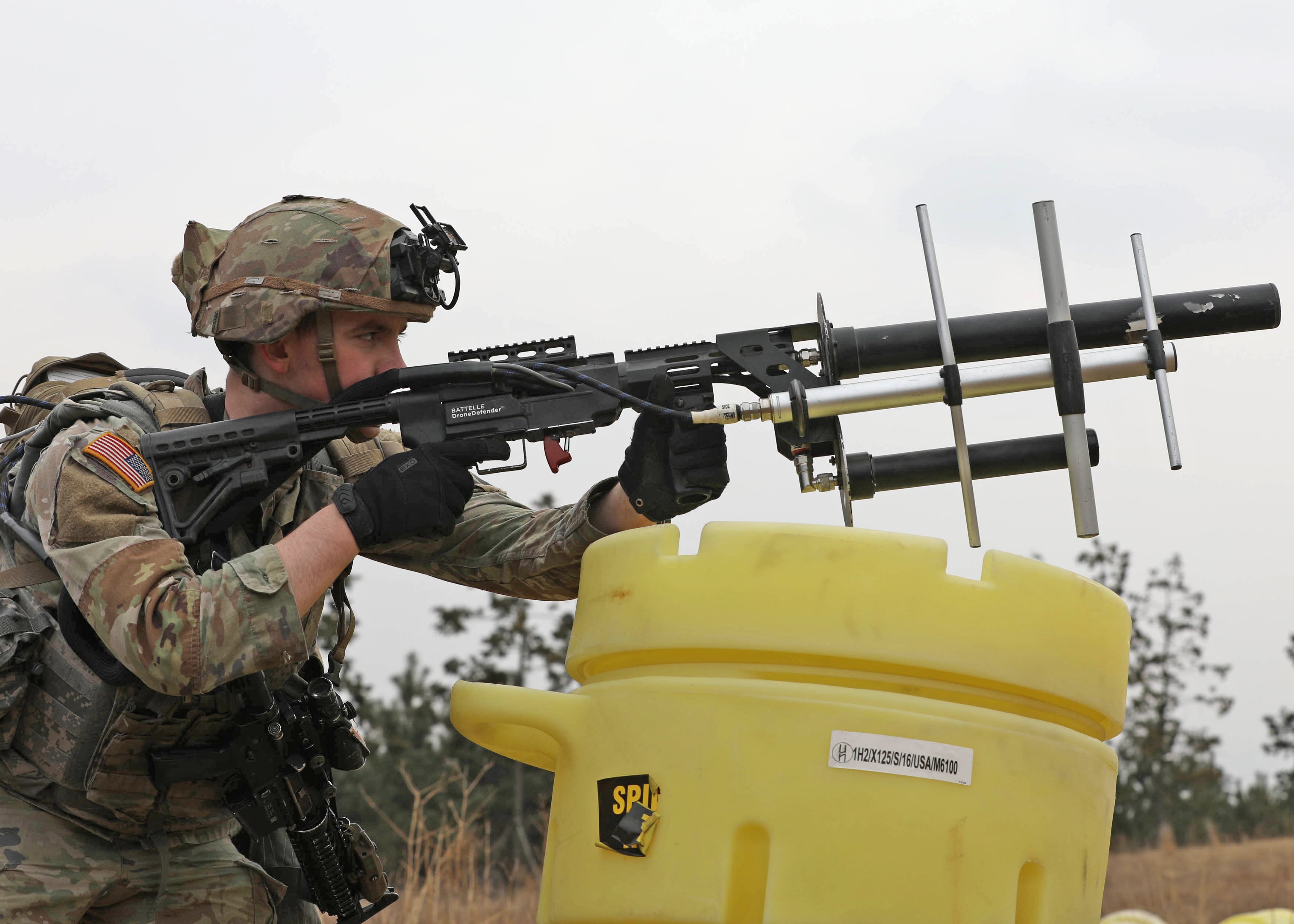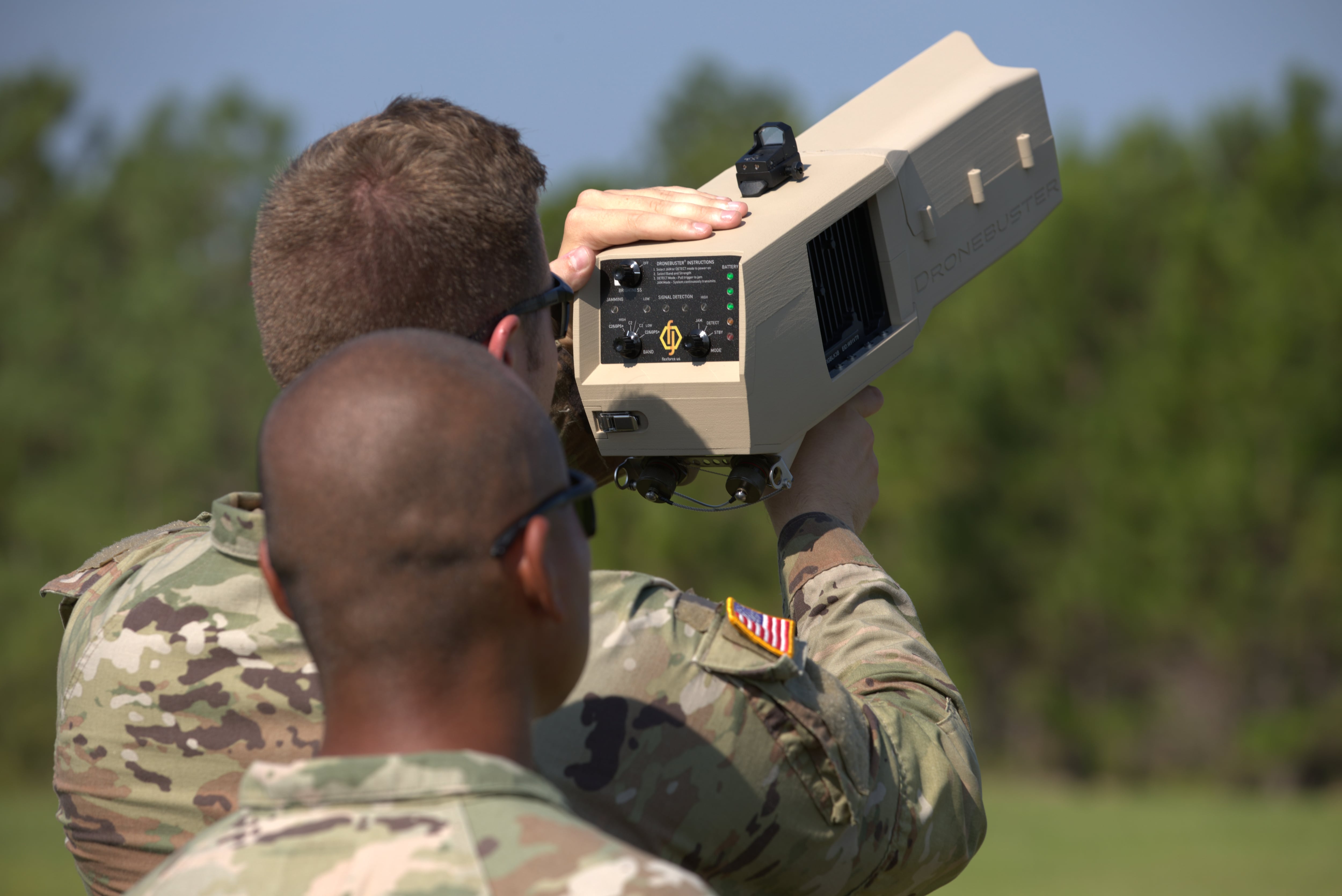Soldiers recently deployed to the Middle East often had less than a minute to decide how to take down an incoming drone.
A unit detecting, intercepting and destroying a drone often took less than four minutes, said Maj. Gen. Scott Naumann, commander of the 10th Mountain Division.
To meet that threat, the two-star is working with his unit and using a soldier-created tool to prepare troops to counter drones more effectively.
“Training [counter-drone] should be as routine as drawing our rifles, going to the range and honing our marksmanship skills,” Naumann said at the Maneuver Warfighter Conference at Fort Moore, Georgia, in September.
RELATED

The 2nd Brigade Combat Team experienced 170 one-way drone attacks between August 2023 and April 2024, according to Naumann.
That may seem like a lot, but if data from the Russia-Ukraine war is any indicator, Naumann said, units could face that many attacks or more in a matter of days.
“Let that sink in a little bit,” Naumann said. “Our formations were defending from fixed sites. We weren’t maneuvering on the offense, and we weren’t conducting large-scale combat operations.”
While deploying units are developing more effective training methods to counter drone attacks, the Army is also making such habits part of a soldier’s foundational skills.
The service announced last year that it would include counter-drone training in boot camp. Staff at the Center for Initial Military Training is writing the doctrine for this initiative, Army Times previously reported.
Sgt. Brent Hemphill, a squad leader with 2nd Battalion, 2nd Brigade Combat Team, described his experience responding to frequent rocket attacks during a recent deployment to Syria.
“After the initial months, rocket attacks became a regular occurrence, averaging two to three times a week, mostly at night,” Hemphill said in a release. “We’d grab our gear and head to bunkers. Depending on the situation, we’d either deploy as a quick reaction force or track down the attackers based on intel or witness reports.”
A similar experience during a 2022 deployment of the 10th Mountain’s 1st Battalion, 32nd Infantry Regiment, 1st Infantry Brigade Combat Team, to Syria sparked an idea for how to prepare soldiers for this new reality.
At the time, 1st Lt. Samuel Strobel was serving as a night battalion battle captain, according to an Army release, and his experiences, along with those of 1st Lt. Mitchell Crowley, would lead them to create the Randomized Enemy Action Contact Trainer, or REACT, system.
The application “generates essentially combat information about an incoming drone or rocket attack that helps simulate battle drills for an operations center,” Naumann said. Users can adjust conditions in the application to change the type or number of attacks, according to Naumann.
Naumann highlighted Strobel’s creation as an example of the innovation he and other leaders are seeking in all their formations.
Todd South has written about crime, courts, government and the military for multiple publications since 2004 and was named a 2014 Pulitzer finalist for a co-written project on witness intimidation. Todd is a Marine veteran of the Iraq War.




